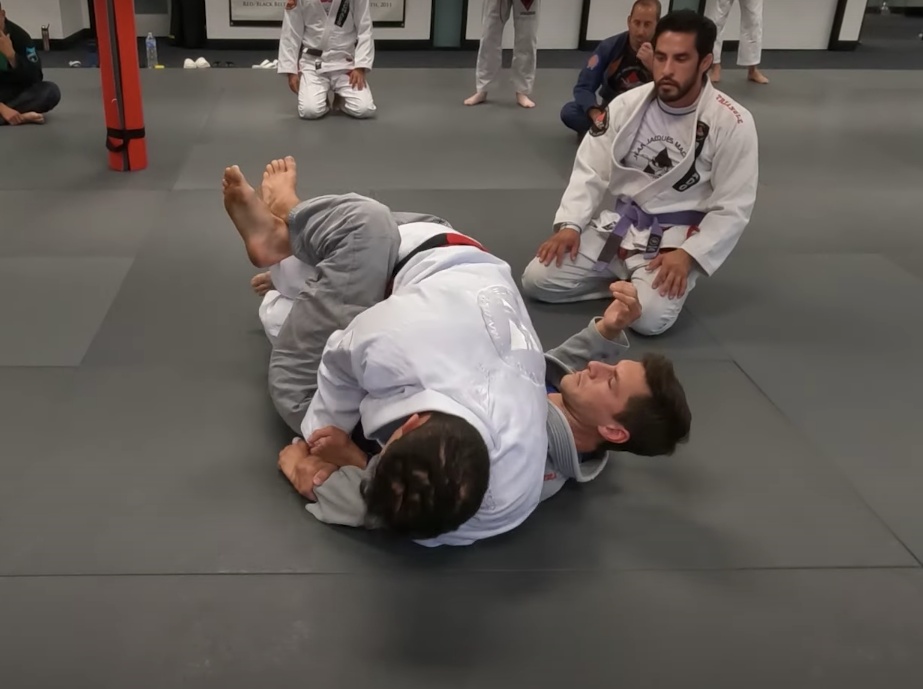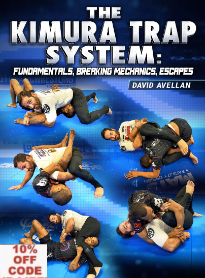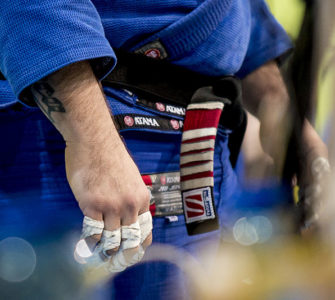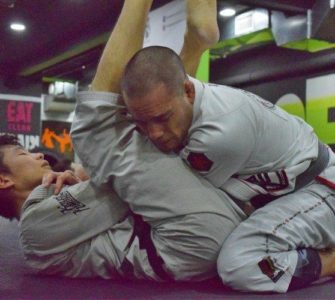When you hear high level coaches talk about their approach to jiu jitsu they often talk about “systems.” A system in the context of jiu jitsu refers to an organized set of actions and responses that you use in a given situation. Jiu jitsu in general is a system. When trapped between someone’s legs, work to get past them.
Once past them, consolidate your position (be it side control, mount, or back control), then look for opportunities to attack a submission.
The systems these high level coaches are talking about are usually much more specific than this, but the general idea is the same. When you are given a certain stimulus, you respond in a certain way. It is worth it to identify the specific techniques you will use in any given situation for two main reasons. Speed of decision making, and replicability.
A great system that anybody can use in all situations is the Kimura Trap system.
David Avellan has used his unique kimura trap/kimura lockdown system at the highest level of competition. Depending heavily on the kimura lock setup, this technique can be used for various reasons ranging from submissions to sweeps.
The Kimura would be known as the Reverse Ude Garami, or the Double Wrist Lock in Catch Wrestling circles.
There are a lot of different names and sources to what we now know as the Kimura Lock. The most famous of them is the story of Masahiko Kimura, who the technique is now named after.
It is a very effective and powerful lock that can be placed from almost any position, top or bottom.
Lots of times when you go for the Kimura from bottom Half Guard, your training partners will be quite stubborn about not letting you finish it… But that’s not going to be a problem anymore after you learn this Half Guard sweep!
It’s done with the Kimura set in place. David Avellan demonstrates on the video below:
Master Legendary Kimura Fundamentals with 2009 ADCC Bronze Medalist, Decorated Career Grappler, and Coach David Avellan
- Let Freestyle Fighting Academy Owner and 2004 ADCC Superfight Champion David Avellan give your submission toolbox a massive upgrade with this complete guide to enhancing your kimura
- A Black belt under Ricardo Teixeira, David Avellan has defeated some of the biggest names in BJJ and is well known for for his dangerous kimura traps.
If you’re someone that works from bottom guard, or may be looking for ways to spice up your arsenal of moves, then you find the right place!
Technical Tidbits-Setting Up The Rolling Armbar
The beauty about having the kimura trap/kimura lockdown in your arsenal is that it is a super effective tool for setting up various kinds of attacks. In this instance, we’re looking at the rolling armbar submission, by setting it up first with the kimura trap.
As we set up the kimura lock down position—by setting up a kimura lock, with one leg over the top on their submission-side hip—we want to make sure that we unhook our bottom leg. Normally from this setup, your bottom leg will be hooked to the far-side leg of your opponent.
Once you unhook that leg, you’ll want to bring it out closer to their head. At the same time, take the foot that is on their hip, and weave it tightly to their body. A good point of reference is to keep it close to their ribs. By now, you should notice that your legs are in position that would normally be in if you were looking for the traditional armbar submission.
The next step is hands down the most important one! With everything in place, you’ll want to “kiss the mat” as David says. Obviously, you aren’t literally kissing the mat—because that’s really gross—but you’re planting your forehead on it firmly.
Now that you have reached this point, it’s time to go in for the kill!
Begin turning your body in whichever direction that the arm is being isolated. By fully rotating your body and using your legs, you should be able to end in the perfect armbar setup. From here, simply forgo the kimura hold for your traditional armbar submission, and finish with the tap out!
Make sure you really focus while drilling this one! There some common mistakes that happen quite often, and will compromise the effectiveness of the finish. Often people will forget to unhook their bottom leg, so when they try to thread their other leg through, it goes nowhere.
Also, it’s common that people forget to thread their submission-side leg, and leave it on the hip, rendering the move useless. The biggest mistake people make is placing their head properly on the mat. Failing to do so will put tremendous pressure on your neck, which can lead to serious injury!
The Effectiveness & Usefulness Of The Kimura Trap
For reasons that I could go on and on about, the kimura trap—in my book—is something that every grappler should look into learning!
First off, just having the trap/lockdown setup in your toolbox is good because of the psychological edge you’ll have on your opponent. Think about it, if you were in someone’s guard and they reach up and apply the kimura trap, the first thing you’re thinking of is how to defend against the impending kimura.
However, that clearly isn’t the only option! With countless attacks—such as the one discussed above—the kimura trap is the perfect decoy to gets your opponent thinking you strictly want the kimura and nothing else. Once this is achieved, your opponent will then begin to let their guard down, which allows you to hit a different submission.
The kimura trap can allow you to hit the kimura, rolling armbar, and other various submissions, but also gives you the opportunity to look for sweeps and transitions that otherwise wouldn’t be there.
Unlike certain setups and techniques, the kimura trap offers a wide array of possibilities that anyone can take advantage of! There is no doubt in my mind that kimura trap is the way to go if you want to elevate your Brazilian Jiu Jitsu game!
Adding A Whole New Dimension To Your Grappling Game
For me, I’m someone that loves to work from bottom guard. Given my affection for leg locks, I find myself pulling guard quite often; however, this can also work against me given my size. Being smaller, it’s not rare for me to get stuck here in bottom guard.
I feel that having the kimura trap in my grappling approach allows me to be more comfortable and dangerous from my back. Especially against bigger grapplers who may try to muscle against me, this setup is perfect for us smaller guys looking to control our opponents without putting ourselves in harm’s way.
Honestly, if you’re a grappler that favors bottom guard, then there is no reason for you NOT to know how to execute the kimura trap! I wish I had more hands so I could give this technique multiple thumbs up!


















